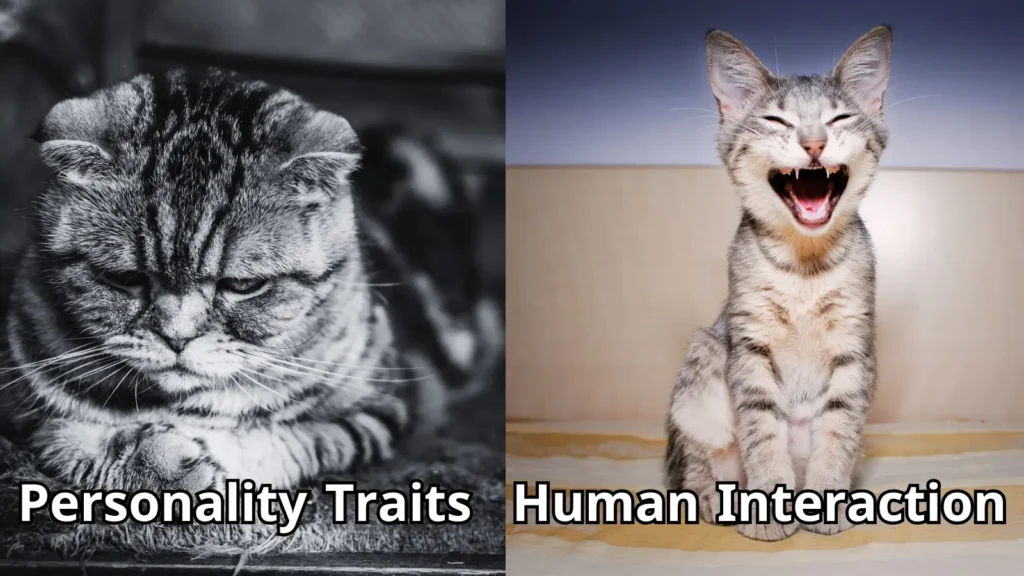Unveiling the Mystery: Are Blue-Eyed Calicos Cats Real?
Blue-Eyed Calicos, known for their vibrant, multicolored coats, have long captured the fascination of cat lovers everywhere.
In this comprehensive guide, we explore the intriguing possibility of calico cats with blue eyes, diving into their genetics, distinctive characteristics, care requirements, and more.
Our goal is to provide you with a definitive resource, addressing all your queries about these captivating creatures in a straightforward and engaging manner.
Genetics Behind Calico Cats
The hallmark of calico cats is their tri-color coat, typically a mix of orange, black, and white. This coloration is primarily due to genetic factors linked to the X chromosome.
Since females have two X chromosomes, they are more likely to exhibit this colorful pattern, making male calicos extremely rare.
Are Blue-Eyed Calicos Possible?
While calico cats usually have gold or green eyes, blue-eyed calicos are an exceptional rarity. Blue eyes in cats are generally linked to two genetic traits: the presence of the gene for white fur, which can mask other colors and create blue eyes, or the specific gene that causes the blue eye color itself.
In calicos, the chance of having both the tri-color coat and blue eyes is exceedingly uncommon, though not impossible.
Personality Traits of Calico Cats
Calico cats are not only known for their striking appearance but also for their spirited personalities. They are often described as fun-loving, assertive, and occasionally feisty, making them delightful companions with dynamic personalities.
Caring for a Calico Cat
Caring for calico cats involves regular grooming to maintain their beautiful coats, ensuring they have a balanced diet, and providing plenty of playtime. Like all cats, calicos thrive on attention and love, making them wonderful pets for families and individuals alike.

Conclusion
Whether you are an avid cat lover or simply curious about these multicolored beauties, understanding the rarity and allure of blue-eyed calico cats enriches the appreciation for their unique genetics and charming personalities.
Although finding a blue-eyed calico can be like discovering a gem, the allure of any calico cat, regardless of eye color, lies in their striking appearance and vibrant character.
Read more: Treating-mango-worms-in-dogs
Exploring the Rarity of Blue-Eyed Calicos Cats:
Can Calico Cats Have Blue Eyes?
Calico cats with blue eyes are an extraordinary sight in the cat world, marked by their vibrant, tri-colored coats—usually a mix of black, brown, and orange patches—and stunning blue eyes.
This rare combination results from unique genetic traits that make each blue-eyed calico a treasured find for cat enthusiasts.
These cats are not only visually striking but also cherished for their delightful personalities, making them a sought-after addition to any household.
Characteristics of Diluted Calico Cats
Diluted calico cats present a softer color scheme in their fur, with black turning to dark gray, orange to pale tawny, and brown to beige. This muted palette retains the charm of the traditional calico but offers a gentler visual appeal.
These cats also display a range of eye colors, including shades of blue, yellow, and green, distinguishing them from tortoiseshell cats, which typically have less white fur.
Genetics Behind Calico Cats
The genetic basis for calico coloring lies in the X and Y chromosomes that determine a cat’s sex. Females have two X chromosomes, making them more likely to exhibit the calico pattern.
Male calicos are exceedingly rare because they require two X chromosomes to display the pattern and are generally sterile with possible health complications.
Calico Cat Cultural Significance
Calico cats hold a place of significance in many cultures:
- Germany: Known as “Glückskatze” or “lucky cat.”
- United States: Often referred to as “money cats” for their supposed ability to bring financial fortune.
- Japan: Believed to protect against misfortune, owning a calico is thought to attract positive experiences.
Calico cats, especially those with blue eyes, are not just a visual delight but also carry a wealth of symbolism and cultural importance, making them revered pets around the globe.
Discovering the Charm of Blue-Eyed Calico Cats:
Unpacking the Genetics of Calico Colors
Calico is a term used to describe a cat’s tri-color coat pattern, typically featuring white, black, and orange patches. This distinct pattern is predominantly seen in female cats due to a genetic trait linked to the X chromosome.
Read more: Discovering the Charm of Blue-Eyed Calico Cats:
The presence of blue eyes in calico cats adds a layer of rarity, often attributed to genetic mutations or specific breed characteristics.
The Rarity of Blue-Eyed Calicos
Blue-eyed calico cats are exceptionally rare and highly valued. The striking blue eyes in these cats are less common compared to other eye colors in calicos, making each blue-eyed calico a remarkable discovery.
Cultural and Historical Significance
Cultural Reverence: In various cultures, particularly in Japan, calico cats are seen as symbols of good luck and are thought to bring fortune to their owners.
Folklore and Mythology: Calico cats feature prominently in folklore, often portrayed as protective spirits or guides for lost souls, enhancing their mystical appeal.
Physical and Health Attributes
Distinctive Features: Beyond their eye color and patchwork coat, calico cats can vary widely in size, build, and coat length depending on their breed.
Health Factors: While generally healthy, calico cats may inherit certain breed-specific health issues. Regular veterinary check-ups are crucial to monitor their well-being.
Behavioral Characteristics
Personality Traits: Known for their spirited and independent nature, calico cats also display a smart and sometimes sassy demeanor.
Human Interaction: These cats value their social interactions but on their own terms, often showing affection selectively.

Caring for a Blue-Eyed Calico Cat:
Nutrition and Diet: It’s important to provide a well-balanced diet tailored to their age, health, and energy levels. Consultation with a veterinarian can guide proper nutritional planning.
Exercise and Engagement: Engaging playtime is essential for mental and physical stimulation. Interactive toys and puzzles can help maintain their sharp instincts.
Tips for Adopting a Blue-Eyed Calico:
Adoption Guidance: Opt for reputable shelters or rescue organizations, where the chances of finding a mixed-breed calico with blue eyes might be higher.
Pre-Adoption Planning: Be prepared for the commitment to provide a supportive and loving environment, recognizing the needs and care requirements of your new pet.
Addressing Common Misconceptions:
Myth versus Reality:
| Myth/Truth | Statement |
|---|---|
| Myth | Calicos are a specific breed. |
| Truth | Calico refers to a color pattern, not a breed. |
| Myth | All calicos share similar temperaments. |
| Truth | Personalities of calico cats can vary as much as in any other color or breed. |
Blue-eyed calico cats blend unique genetics with cultural mystique, offering a special combination of beauty and lore that captivates cat enthusiasts worldwide.
FAQs: Blue-Eyed Calicos
Can male calico cats have blue eyes?
Yes, male calico cats can have blue eyes, although they may also display other eye colors such as green, copper, or even heterochromia, which results in two different colored eyes. Their unique fur and varied tail lengths contribute to their distinct and appealing appearance.
Are Blue-Eyed Calicos cats deaf?
Not all blue-eyed calico cats are deaf. While there is an association between white fur, blue eyes, and deafness, it does not apply to every calico cat with blue eyes.
Are blue calico cats rare?
Yes, blue or dilute calico cats are quite rare. While the standard calico cat is already uncommon, appearing in roughly one out of every 1,000 cats, dilute calicos are even more scarce due to their muted coloration.
Why are blue-Eyed Calicos cats so special?
Calico cats are valued for their vibrant and independent personalities. They are affectionate and loyal, capable of forming strong attachments, particularly with a primary caregiver, and they interact well within family settings, making them versatile and sociable pets.
Is it rare for cats to have blue eyes?
Blue eyes are relatively rare in cats. While many kittens are born with blue eyes, these often change as they mature. Specific genetic traits are necessary for maintaining blue eyes into adulthood.
What breed of cat has blue eyes?
Siamese cats are famously known for their striking blue eyes. They are highly social, preferring continuous companionship, and are well-suited to active households where they can receive consistent attention.
Are blue eyes in cats a mutation?
Yes, the blue eyes seen in the Ojos Azules breed, among others, result from a dominant genetic mutation known as DBE (Dominant Blue Eye), which specifically affects eye color.
Do cats born with blue eyes stay blue?
While all kittens are initially born with blue eyes, these usually change over time except in pointed cats, which retain their blue eye color throughout their lives. Cats with significant white fur may also maintain blue eyes or exhibit other colors depending on their genetic background.
Key Differences Between Calico Cats with Blue Eyes and Other Color Patterns
- Eye Color Rarity: Blue eyes in calico cats are exceptionally rare, whereas other color patterns often feature more commonly seen eye colors.
- Genetic Makeup: Calico coloring is primarily linked to X-chromosome related genes, making the pattern unique compared to the more varied genetic bases of other color patterns.
- Cultural Significance: Calico cats hold a higher place in cultural beliefs and folklore, attributed to their unique appearance and rarity, compared to moderate significance in other color patterns.
Read more: Differences Between Calico Cats with Blue Eyes and Other Color PatternsThe Unique Appeal of Blue-Eyed Calico Cats
Calico cats with blue eyes represent a remarkable phenomenon in the world of feline genetics. Their striking appearance is not just a visual delight; it’s a reflection of unique genetic traits that make each blue-eyed calico a special entity.
Those fortunate enough to have one of these cats as a pet often find that their allure goes beyond looks, as these cats are known for their vibrant personalities and charming demeanor.
Conclusion:
Delving into the world of calico cats with blue eyes uncovers a captivating mix of genetic uniqueness, endearing traits, and significant cultural standing.
These cats are more than just visually stunning—they are cherished companions with distinct personalities and rich histories, making them highly esteemed among cat enthusiasts and pet owners alike.
